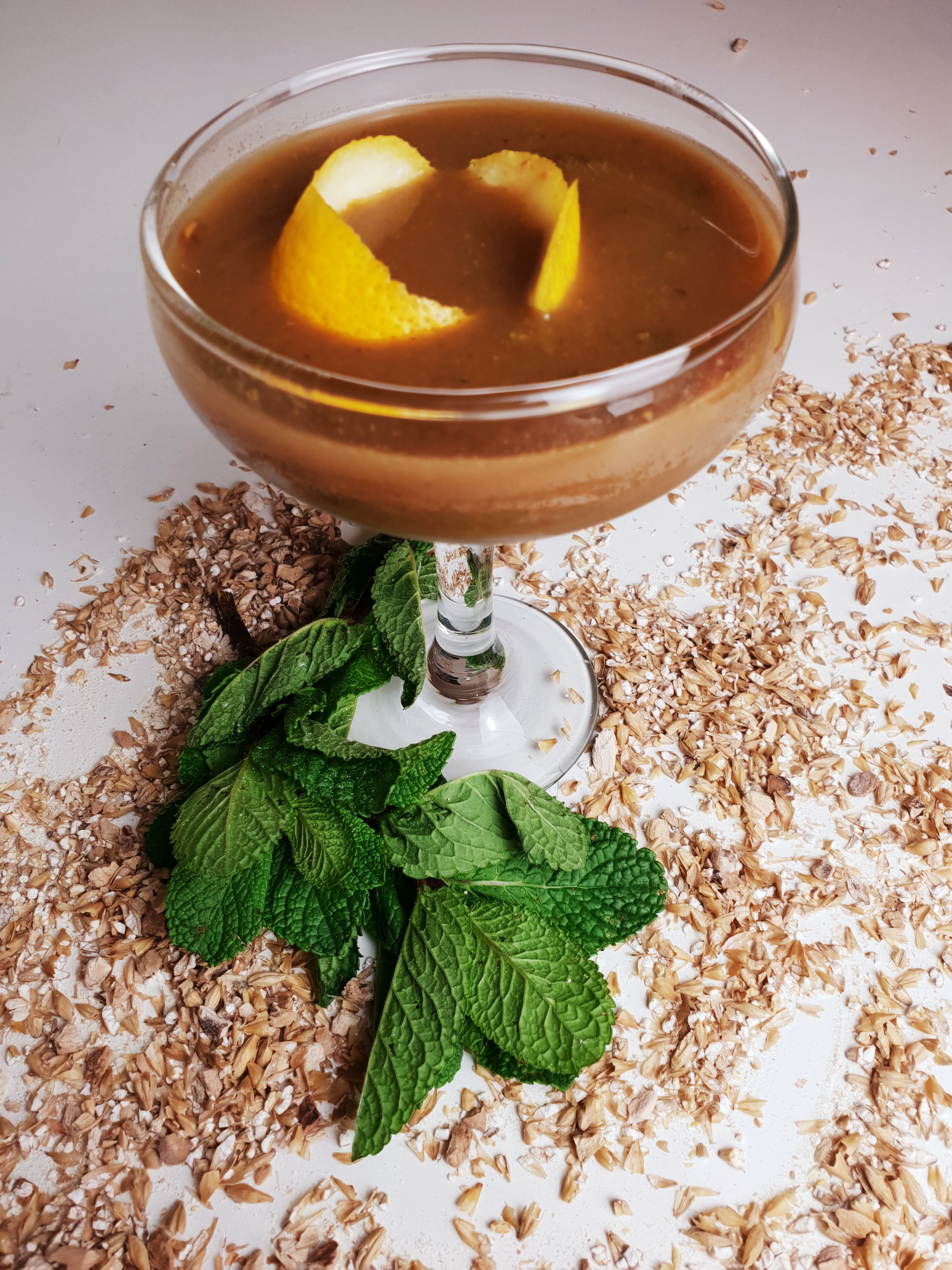I have, as per usual this time of year managed to get a cold. So I’ve spent some time Googling the use of beer as medicine. For science. So this week in #beerhistory I am going to be talking about Malt Tonic! Before I get to the recipe, I am going to do the thing that always annoys me when food bloggers do it and bury the recipe at the end with a long-winded introduction. But, seriously, this next part will provide some context for malt tonics and their equivalents in Ireland.
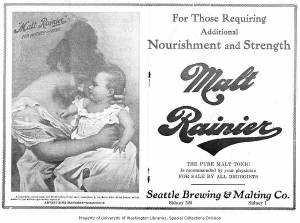
So what is a Malt Tonic? In general, they were derived from malt and hops, much like the name suggests, but often thicker. They also sometimes contained all sorts of additives, like calamus root. Options like Trommer’s or Maltin had additives such as with iron, quinine, cod liver oil or strychnine![1] In the past strychnine was used a medicine, but now, of course, we most commonly use it to murder things. Rats, pests, and victims in crime novels have all fell afoul of this poison. But not so long ago, they used it in malt tonics. Fun!
Most importantly, these malt tonics did indeed usually contain alcohol, as much as beer, and often more. Dr. Charles Harrington stated that of the 21 he had surveyed, “all were alcoholic, some stronger than ale, beer or even porter”.”[2] By the late 1800s, many breweries were producing malt tonics advertised as medicines.
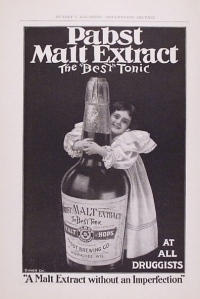
One such brewery was Pabst. Marketed and sold from 1888-1956, Pabst Best Tonic was one of many such malt tonic products created in the late 19th and early 20th centuries. Thomas Mickey, who conducted an invaluable study on the marketing and creation of this product, commented, “What makes this case so important to the social history of public relations is that the product had as much alcohol as beer but was called a medicine”. And what made it “medicinal”? Because they said so. Literally. Micky stated, “they called the Tonic medicine or medicinal, therefore it was—the name they gave it was what it was. Pabst, along with other actors like pharmacists, nurses, and doctors, defined the meaning of Tonic.”[3]
Pabst Extract Best Tonic was billed as “a nutritive tonic, not a stimulant, a food that makes flesh and blood, bringing roses to the cheek and plumpness to the wasted form, while soothing the fretted nerves like a mother’s kiss.” A 1904 ad from Pabst stated: ‘This is Woman’s Era’ says an eminent writer. Woman’s advancement has added new responsibilities to the burdens Nature has already imposed upon her. With frail body and shattered nerves, how can she carry this double burden? The pallid face, the sunken cheek, the lustreless eye tell the story of overtaxed strength and of nervous energy drained to the dregs. The deep lines that furrow the once beautiful face cannot be rubbed out with lotions or cosmetics. The glory and strength of womanhood must be restored from within. AS a rebuilder and revitalizer, perfectly adapted her needs, she can find nothing that will equal Pabst Extract The ‘Best’ Tonic.”[4]
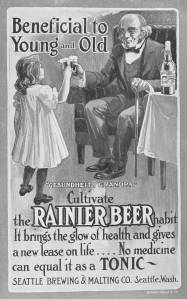
As their pamphlet “Baby Secrets” explains, the extract is “an ideal preparation for nursing mothers, giving them abundant nourishment to resist the extra drain upon the system” and aids in sleep. Harried mothers are promised that a bottle a day for 24 days will restore beauty.[5] Pabst also claimed to cure insomnia. “100 Points of Perfection” (ca. 1894) argues against taking drugs for sleep but recognizes the necessity of sleep to produce calm nerves. How to sleep? According to Pabst “Take a bottle a day, for two weeks”, and Zzzzzzzzzzzzzzzzzzzz.
But what about Ireland. Well, I speculated that because of Guinness, Ireland did not need a malt tonic as such. This seems to be supported in the advertising campaigns that run parallel to the rise of Malt tonics in the US.
For example, David Hughes’s book “A Bottle of Guinness Please”: The Colourful History of Guinness”, has an interesting section on Guinness as medicine with several examples of press ads from the 1930s which state things like “Weak and Shaky. Doctor find Guinness a magnificent tonic” and “Poor appetite and low spirits. Doctor orders Guinness”. So very much in line with the malt tonic ads from the US. Hughes cites Dr. Lumsden, one of 122 doctors who allowed Guinness to use their views on its medicinal qualities, who had been prescribing it since the 1890s for nursing mothers. Hughes also stated that Guinness was available for free in UK hospitals, and it was used to treat everything from influenza and boils to insomnia and blood disorders; And in 1954 and 1961/2 Guinness mailed 54,000 doctors about its medicinal qualities. They got 30,000 replies with 11,500 positive and only 82 negative responses.[6]
Additionally, Martin Cornell kindly sent me a wonderful post all about stouts that we specifically made for the sick by Guinness. Again, the advertisements here certainly are well in line with what we saw for malt tonics in the United States. I also had a wonderful discussion with John (@thebeernut) and Liam (@beerfoodtravel) and they introduced me to Hop Bitters. Liam sent me his fantastic article on these and as you can see from his examples, the concept is very similar to our US malt tonics. You can read Liam’s article here.
So that is a somewhat brief overview of these malt tonics and now onto the brewing process and recipe.
For this project, I chose a recipe from a US patent application dating to 1888. Moses H. Kluber of Dodge City Kansas applied to a patent for his “medicated or tonic beer” on July 17th of that year. Kluber stated that “My beverage is an improved beer which is healthful, palatable, and not intoxicating, and therefore adapted for use by all classes of persons. For the entire recipe, you can view it here.
***DISCLAIMER*** This historical recipe contains Calamus Root. This is now illegal to use in food or drink in the United States. The tetraploid form of this root is also illegal in the EU.[7] This is not the form that I have, obviously, and the kind I have is easy to find at health food shops in Ireland. Apparently, the tetraploid form is carcinogenic and can allegedly have all kinds of terrible side-effects. WebMD has a laundry list. Again, and I cannot stress this enough, due to the potential toxicity of the plant, studies on its efficacy are limited or non-existent. Use it at your own risk. And, obviously, don’t make this/use this herb where it is illegal. I don’t want anyone getting sick or arrested.[8]
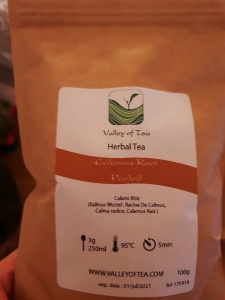
Okay I’ve covered myself. Moving on…
This is most certainly part of the “medicinal” portion of this tonic. Calamus root, aka Sweet Flag, aka Sweet Myrtle, has been used as medicine for years around the world, including parts of Europe and Asia. Its historical uses include stomach issues and anxiety. So well in line with what many malt tonics promised. Growing at the edges of lakes, streams, marshes and the like, Calamus root has been used from everything to treating pain to an additive in foods and alcohols. I would seriously recommend giving it a search, it is a really interesting plant.
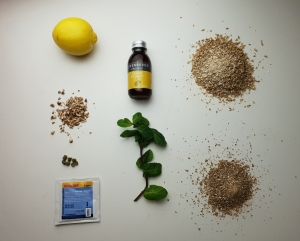
The ingredients are as follows: “Fourteen ounces malt; seven ounces rye-flour; one-half ounce ground calainus-root (calamus root); one-fifth ounce crushed Spearmint, (leaves and stems;) one fourth ounce hops; one fourth ounce alcohol, (by measure;) one-tenth ounce lemon-oil. (by measure;) one balt ounce fresh yeast; one half ounce lemon-peel; sixteen ounces sugar, and three gallons water.
Step 1: According the patent, I needed to mix the rye and malt together with small amount of warm water and then let that stand for 12 hours. This was fairly straightforward. I used a standard base barley malt and rye malt. If I did this again, I would use straight up rye flour. My entire kitchen smells like a brewery and I am here for it.
Step 2: Knead this mixture into a dough and then roll into a one-inch thick sheet and cut into pieces about 6 inches in diameter. Bake on low until “hard and brown”. Easy enough. I opted not to cut into pieces and just lined the bottom of a cookie sheet. I baked at about 150C for an hour and a half. This turned into wonderful caramelized malt biscuits.

Step 3: Break these up into smaller pieces and place into 2 gallons of boiling water. Boil until dissolved, at which point you add another gallon of water, this time cold. Cover for about an hour, and strain. At this point I halved the recipe, because I did not have a pot that would be able to handle 3 gallons. I broke up the malt mixture and added to the boiling water and boiled it for about an hour.
Step 4: Add calamus root, hops, lemon peel, and spearmint and boil for 10 minutes. I did not find spearmint, so I used regular mint. In the interest of transparency, I don’t like spearmint, so I didn’t look that hard. Sorry friends. The calamus root was easy enough to source online. I used Hallertau Mittelfrüh. Added these to the pot and boiled away.
Step 5: Then here it gets a wee bit tricky? It says to dissolve the sugar in one-half gallon of the “lllalhillfUSlOll”, That last word is what was written in the patent documentation online. I am assuming the solution? That’s what I went with anyway. I dissolved sugar in some of the mixture. Strain this and add it to the main mixture. Done. In fairness, my straining was rather lackluster and I don’t seem to have a fine enough one. I will remember to pick up a smaller one for my next project. At this point, the mixture is thick and syrupy. It, unsurprisingly, smells strongly of lemon, spearmint, and malt. Shocking.
Step 6: Allow to stand until the temperature is lowered 15-20 degrees (Fahrenheit). Easy enough.
Step 7: Dissolve yeast in a small quantity of the mixture and add this and the alcohol and lemon extract. Let it stand for 8-10 hours,”until a white froth or foam appears, which will indicate that the beer is made and ready to be put in bottles or other receptacles for use.” At this point, my malt tonic has reduced, a lot. I added the yeast, I had chosen a lager version and lemon extract. For alcohol, I opted to just use some London dry gin I had on hand.
Now, we wait.
When I woke up the next morning and checked it, the mix was extremely thick, but definitely had some carbonation. I decided to wait a few more hours before declaring it completed.
And voila! Malt tonic.
I put it in a fancy glass with a twist of lemon because it seemed more cocktail-like then beer in the end.
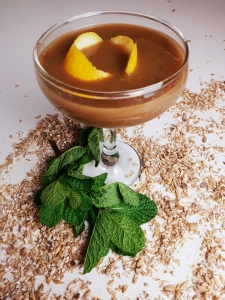
The aroma is dominated by the lemon, although there are hints of mint and a bit of malt there. The flavours were really lemon heavy with hints of the mint, which went really well together. The Hallertau hops worked well and added a lovely bitter backbone to cut through all the sugar and malty sweetness. It was thick though, very thick and opaque, and I definitely need a better filter. You would not want to drink a lot of it. But it was very nice in small amounts!
The verdict: Well, by the time I had completed this malt tonic, by cold had been long gone. But, my body decided to conspire with this product and give me a major migraine, something else these malt tonics are meant to cure. I drank this and waited with bated breath for the sweet relief from this headache from hell. And.. nada. It did nothing. Not a damn thing. But it tasted nice, so eh? I’ll take it. 10/10 would make again just to drink, but would probably simplify the process.
Sources:
[1] Thomas Mickey, “DECONSTRUCTING PUBLIC RELATIONS: PUBLIC RELATIONS CRITICISM,.p.24
[2] See Martha Meir Allen’s Alcohol: A Dangerous and Unnecessary Medicine. Marcellus, N.Y. : National Woman’s Christian Temperance Union, c1900. p. 316.
[3] Mickey, p.19.
[4] 1904 Pabst Tonic Ad https://www.periodpaper.com/products/1904-ad-pabst-extract-malt-tonic-for-womens-health-original-advertising-072780-gh2-262
[5] This ad can be seen here: https://nyamcenterforhistory.org/2017/03/16/the-best-tonic-pabst-malt-extract-pamphlets-in-the-academy-library/#_ftn3
[6] David Hughes, A Bottle of Guinness Please”: The Colourful History of Guinness: https://books.google.ie/books?id=_tOZqDtYv9QC&pg=PT167&lpg=PT167&dq=guinness+for+nursing+mothers+adverts&source=bl&ots=1W1oDkxgUu&sig=ACfU3U22ENVUhe8MQysQUpeqvU0ZxTclbA&hl=en&sa=X&ved=2ahUKEwiwupy05vbmAhVkqHEKHSzPBLcQ6AEwE3oECAkQAQ#v=onepage&q=guinness%20for%20nursing%20mothers%20adverts&f=false
[7] https://ec.europa.eu/food/sites/food/files/safety/docs/fs_food-improvement-agents_flavourings-out111.pdf.
[8] “Opinion of the Scientific Committee on Food on the presence of beta-asarone in flavourings and other food ingredients with flavouring properties”(PDF). European Commission, Scientific Committee on Food. 12 December 2001. Retrieved 28 January 2019.
